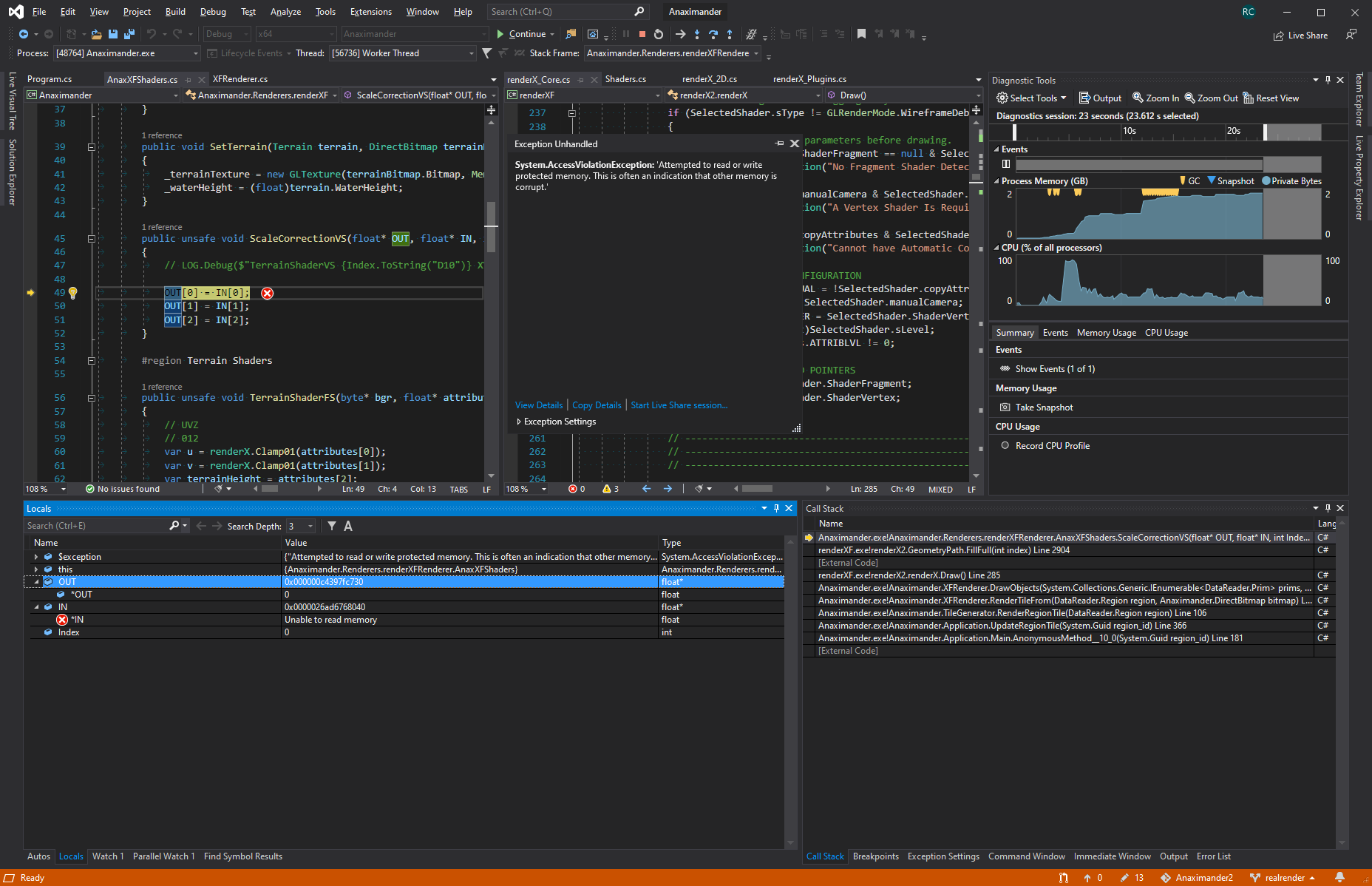@kf6kjg Each renderX instance gets its own independent variables, so it should work perfectly fine in parallel. My theory is that the issue exists for both parallel and sequential drawing, however since the parallel version is much faster, you get the crash faster.
As for the crash, can you send the GLBuffer myBuffer = new GLBuffer(arg1, arg2) initialization which was used for buffer being drawn and the shader configuration for it, with its modifications, ie:
Shader myShader = new Shader(VS, FS, GLRenderMode.Triangle);
myShader.SetOverrideAttributeCopy(false); //Example modification 1
myShader.SetOverrideAttributeCount(3); //Example modification 2
I am attempting to render multiple images at the same time. Occasionally I get AccessViolationException errors.
Each thread gets its own instance of
renderX.However if I render my images sequentially, which takes quite a bit of time, this is not the case. Is it a requirement of this library that there can only be a single instance running at a time?